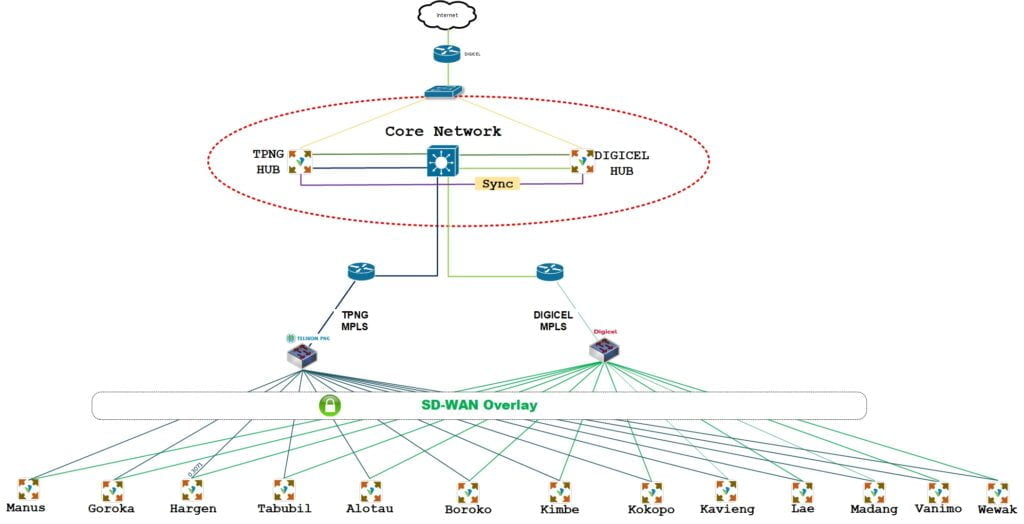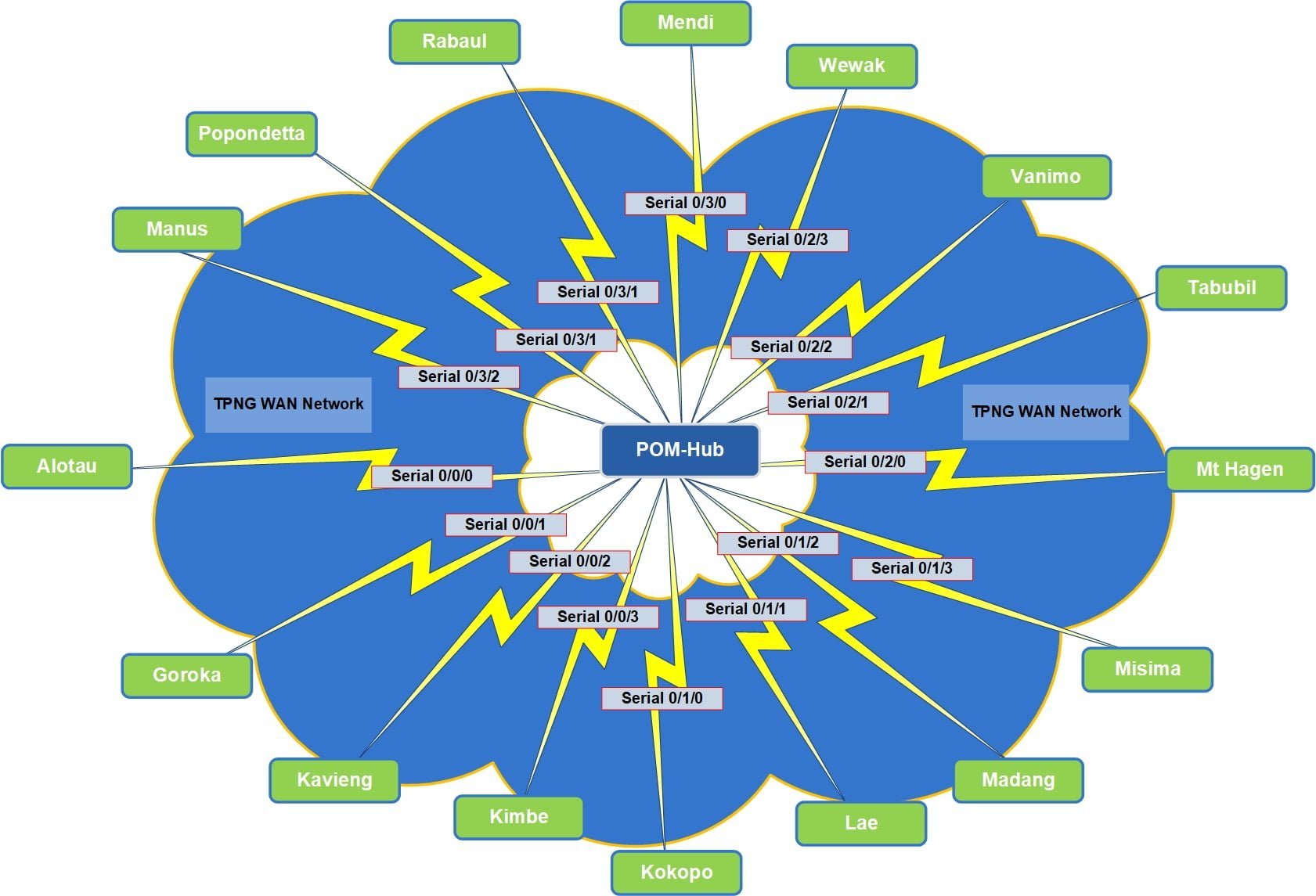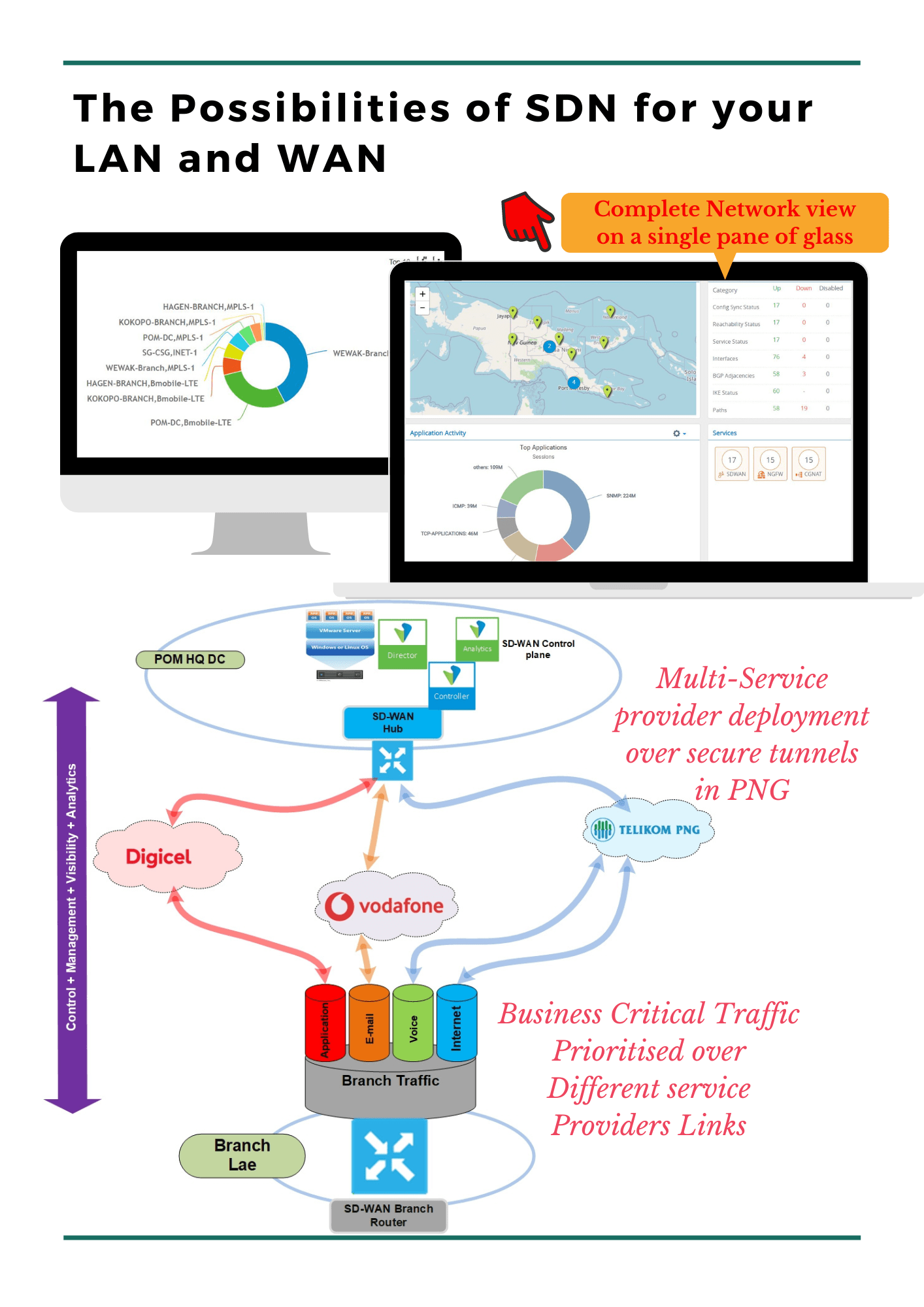Building Rock-solid Hub and Spoke WAN Networks in the Pacific Islands
Building Rock-Solid Hub and Spoke WAN Networks in the Pacific Islands

Until the early 2000s we used to build HDLC WAN circuits (64kbps) over Telikom PNG’s IPVPN Data Network – as depicted in the diagram to below. This was before we had TPNG’s MPLS Network and there was no Digicel Business PNG or Vodafone.

Much has changed in last decade and a half. Networks have evolved – speeds have improved – security is everything. We now build redundant overlay networks using multiple telco circuits. Networks in the Pacific Islands have come a long way – and there’s a lot to be thankful for.
With link throughput having improved 100X, we still have enterprises struggling with poor WAN performances – why?
At one point it was ok to blame the services provider(s) for poor Data Network performances and link instability, because there was a certain amount of truth to this view point . Today however, things have drastically improved and if your networks not running at its optimal best, you need to further investigate – because now it is your responsibility not the Telcos.
Here are three options to consider if your network is sluggish and what to do about it.
Audit Your WAN Networks
As simple as it may sound, start by auditing your own network. Have you got the basics right? Do you have the right Bandwidths for the branches and the headend (head-office/HQ)? Is the Headend an aggregation of all the branch bandwidths? As a minimum see that you have at least a 1:2 ratio or in other words can your headend handle more than 50% of your branch traffic at any given point. Oversubscription at the headend is a performance killer. Typical Symptoms of oversubscription at the headend is excessive packet loss & High Latency during peak periods of the day.
Your audits should reveal what non-critical Applications are chewing up bandwidth. Can these Apps be deprioritised or blocked? If you’re backhauling Internet traffic (this is a waste of bandwidth), can you breakout at the branch site securely using broadband or 4G LTE? Local breakout will not only save bandwidth but also save your OPEX budget $.
Get Eyes into your Networks
Take the guesswork and human perception out of your WAN network’s performance. Integrate tools to see real-time traffic performances. This will not only help you to understand service provider accountability, but it will also help you see if you’re getting your monies worth. That is, are you getting the bandwidth you paid for. Moreover, it will complement the previous point of Bandwidth management and give you clear insight as to which branches are really struggling during business hours.
Hit the PLAY BUTTON on the video below to see how this looks in the real-world. The example here is a branch in Mt Hagen communicating with the head office in Port Moresby over Telikom and Digicel simultaneously in an active-active fashion. Yes, you guessed it! Both service provider links are in use, giving you double the bandwidth and getting what you payed for.
Double your Bandwidth using Secure Overlay technologies
Smart Digital Networks (SDN) lets you build secure overlay networks using various transport types, including MPLS, Internet, Satellite, 4G/5G LTE even Microwave Radio. With SDN when using two or more service providers you could actually utilise all available bandwidth. Let’s take a closer look at the diagram below.

More than 50% of IT budgets are spent on service providers, hoping it will improve branch up-time and overall link performance. So, enterprises in PNG and the Pacific Islands use two or more service providers, in the hope of better uptime – reliability – better Application performance.
 But, sadly these enterprises never get to use all service provider links simultaneously nor do they get to see the benefits of multiple circuits due to the lack in technology within their Data Networks, resulting in loss of money (no ROI). This is no longer the case – thanks to an Enterprise Grade SDN and SD-WAN solution!
But, sadly these enterprises never get to use all service provider links simultaneously nor do they get to see the benefits of multiple circuits due to the lack in technology within their Data Networks, resulting in loss of money (no ROI). This is no longer the case – thanks to an Enterprise Grade SDN and SD-WAN solution!
With a SDN overlay technology you can provide better uptime, sophisticated traffic steering and Quality of Service policies with guaranteed SLA for business critical traffic and secure those un-encrypted Telikom and Digicel WAN circuits. Moreover, Troubleshoot network related issues with a few clicks. Then get Automatic alerts of your WAN link’s SLA breaches.
If you are serious about improving Sub-standard Data Networks, High-latency WAN circuits and poor Cyber Security – you need to consider a proven SDN technology for your enterprise
These are three options worth considering.
Do you know there are proven techniques for building WAN networks in PNG and the Pacific Islands for your enterprise Branches?
What strategies do you use to build Overlay Networks using WAN circuits from TFL, Vodafone, Telikom PNG and Digicel?
If your Branches are struggling to keep up with your enterprise goals and Security is your highest priority, then do you believe SDN will be a game changer?
Let us know
